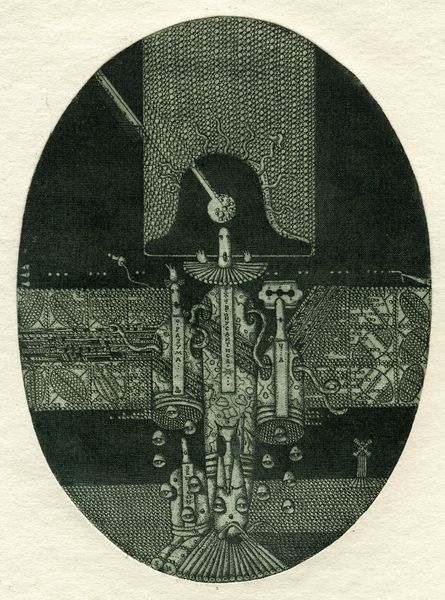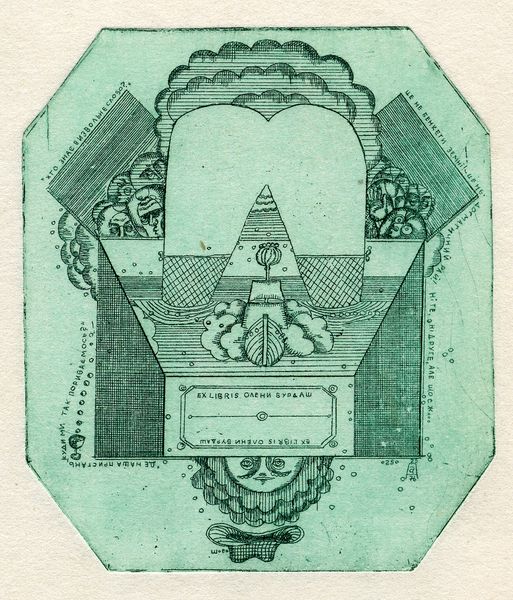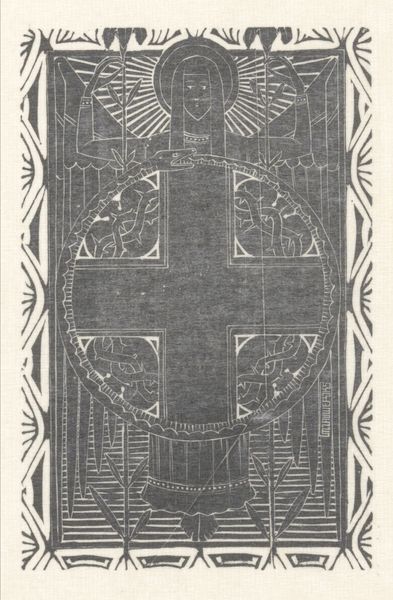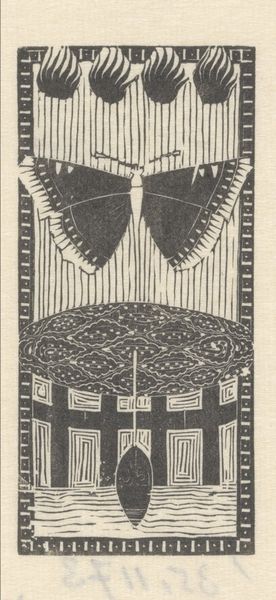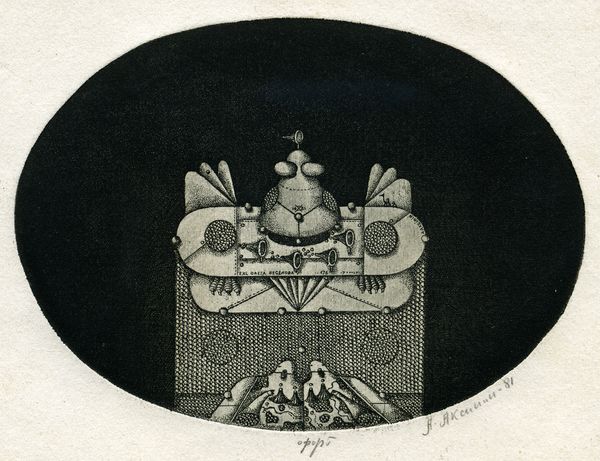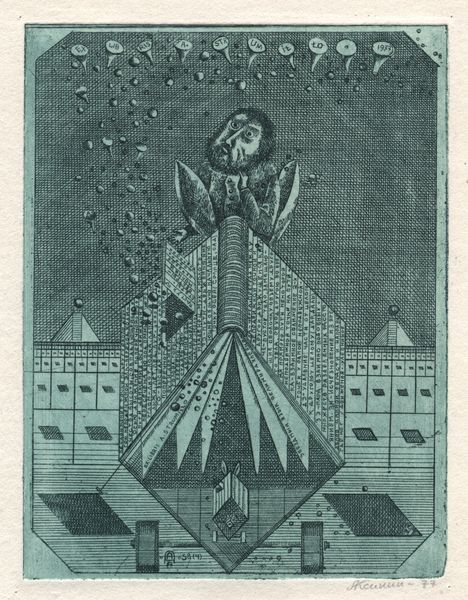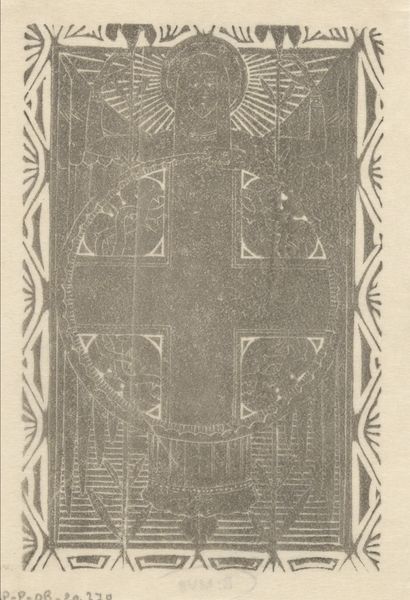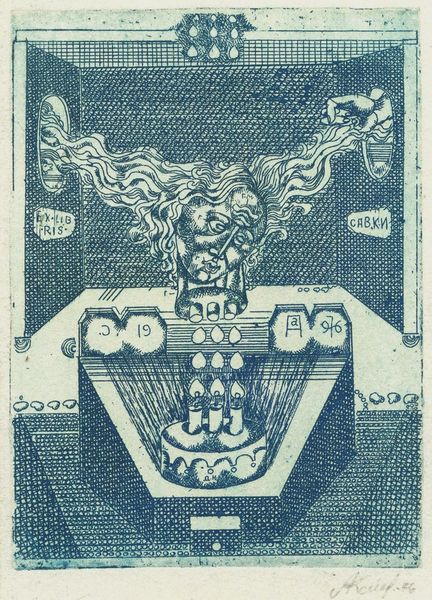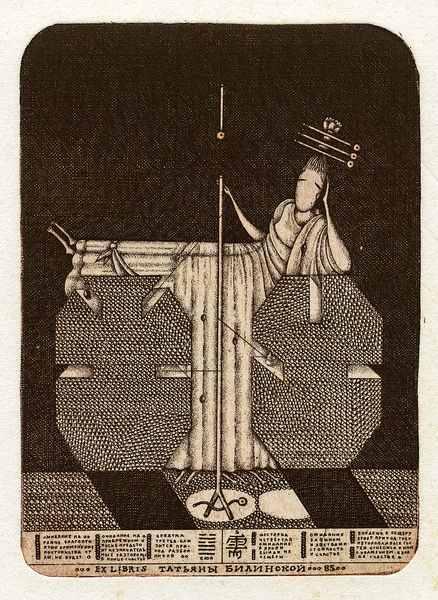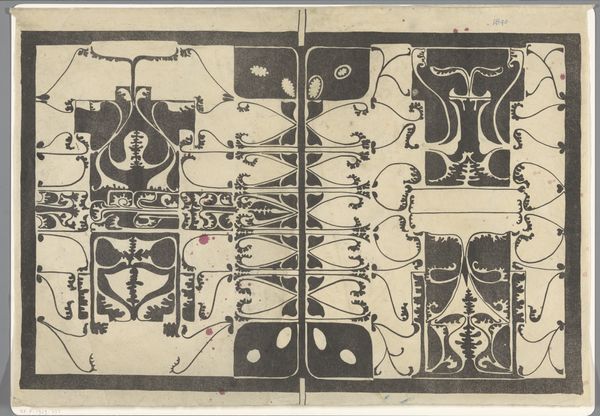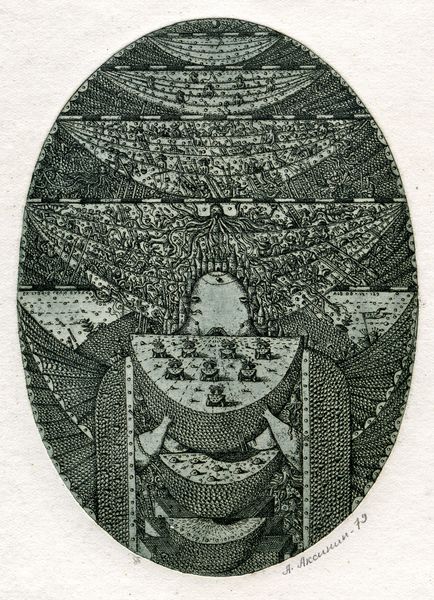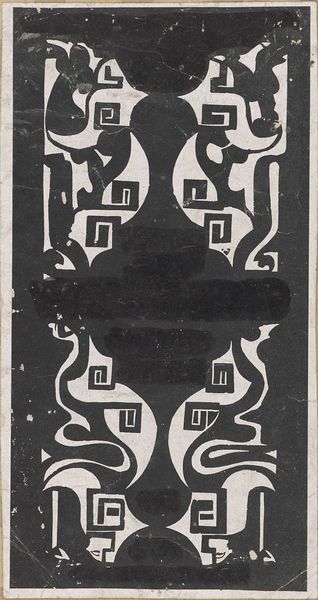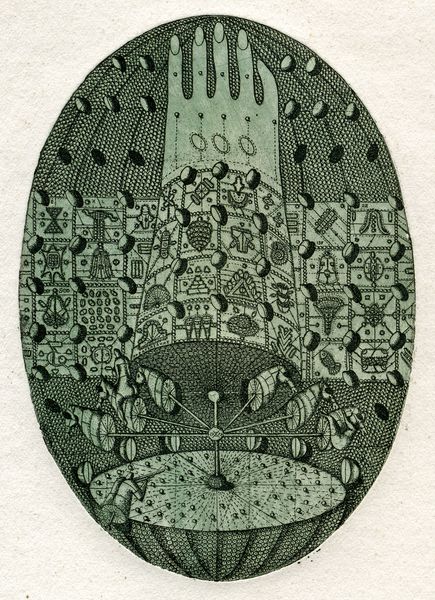
drawing, graphic-art, print, etching, engraving
#
drawing
#
graphic-art
#
quirky illustration
#
blue ink drawing
#
childish illustration
# print
#
pen illustration
#
etching
#
old engraving style
#
personal sketchbook
#
geometric
#
pen-ink sketch
#
line
#
pen work
#
sketchbook drawing
#
sketchbook art
#
engraving
Copyright: Oleksandr Aksinin,Fair Use
Editor: This is Oleksandr Aksinin's "Exlibris of Valery Tarusov" from 1976, a graphic work using etching techniques. It’s so detailed! The shapes and objects are almost dreamlike and contained in what seems like a box with hands… What do you make of it? Curator: I see a fascinating engagement with the means of production here. The etching process, the repetitive lines, all point to a laborious, almost industrial approach, which clashes with the whimsical imagery. Aksinin seems to challenge the very definition of 'high art' by embracing these craft-based methods. Consider how the act of printing, of creating multiples, democratizes the image itself, making it accessible beyond the elite. How does the choice of etching and printing techniques change your understanding of this work? Editor: That's interesting; I was focusing on the symbolic elements within the 'box,' like the ship and scales, but the printing process itself is part of the meaning. So, it is more about the process than its metaphorical intention? Curator: Precisely! Look at the uniformity of the lines, the texture created by the etching. This wasn't about spontaneous expression, but controlled, repetitive labor. Consider how the material, the metal plate itself, influenced the final image. The social context of production, in 1970s Soviet Ukraine, further emphasizes this point. Was Aksinin subtly commenting on labor, industry, and consumption through this unique visual vocabulary? How does the repetitive nature of etching contribute to the narrative the artwork communicates? Editor: So, the act of creating this print is a statement in itself, even beyond the personal symbolism of an exlibris. Thanks, I see it completely differently now! Curator: Indeed! It reframes our understanding of art, prompting us to consider labor, materials, and the very act of creation as central to its meaning.
Comments
No comments
Be the first to comment and join the conversation on the ultimate creative platform.
